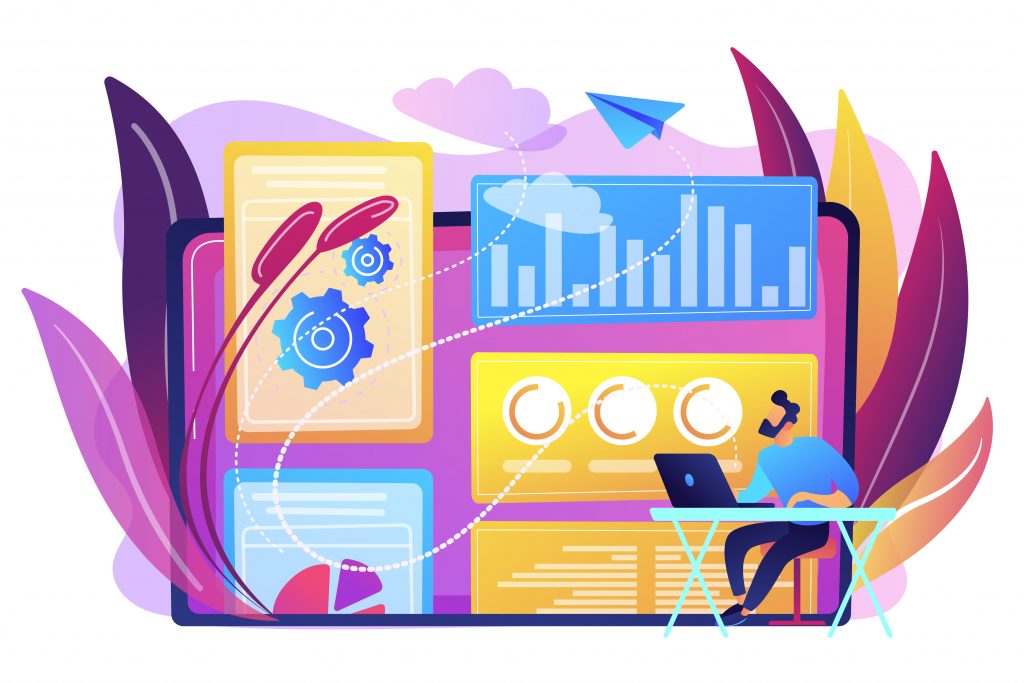
When my father was in college, he had a friend who was blind. His friend made a deal with him – he’d buy a car they could share. The catch? When my father’s friend wanted to take a girl on a date, my father would drop any other commitments and be their designated driver. Sometimes, just for fun, they’d go to an empty lot and his friend would drive the car – flying around at a reckless speed with only the yelling and screaming of his pals to prevent catastrophe.
Now, while we expect this kind of risky behavior in college (based on stories we’ve heard, not our own experiences, of course), flying blind is no way to run a marketing department. Thankfully, today we have access to the marketing attribution software needed to clearly see what channels, content, and campaigns are working…and which are not.
KPIs that matter
When we start our careers as marketers, we tend to jam our foot into the gas pedal and hurry straight into driving programs and campaigns. We learn how to use marketing channels. We learn about content, creative, and CTAs. In time, we master marketing metrics such as views, click-through rates, and marketing-qualified leads. Still, something eludes us. We are counting a lot of things, but none of them are what the CEO really cares about – pipeline and revenue.
For most of us, our first step into the light was single-touch attribution, often enabled by a CRM. Now we could attribute revenue credit to the single campaign which appeared to trigger an important event such as product purchase. Helpful, but also unrealistic in the context of long B2B buying journeys comprised of dozens or even a hundred or more customer touchpoints. So, about ten seconds after we started using single-touch attribution, we realized its limitations in B2B marketing. We were still flying blind.
We needed visibility to the whole journey – every buyer touchpoint, every channel, every content asset, and every campaign that made (or didn’t make) a difference. Only with this complete picture could we hope to optimize our marketing mix across every buying stage in order to grow the business. And, of course, we needed to be able to do this in a modern and automated way that didn’t involve spreadsheets and weekends.
Multi-touch attribution challenge
Led by Marketo (now Marketo Engage), marketing automation providers began to offer capabilities for taking on this multi-touch attribution challenge. In time, Bizible emerged as the leading attribution solution for B2B marketers. Bizible maintains this leadership today as a part of the Adobe Experience Cloud where it can take advantage of native integrations with Marketo Engage and other Adobe software.
So, what’s the value of not flying blind? What’s the value of knowing what’s working and what’s not? As it turns out, the value is immense. We see it with our Bizible customers every day and as we work with prospects to construct financial business cases for Bizible, we regularly come to ROI figures that are as compelling as you will find for any type of software. It makes sense when you think about it. As marketing teams grow in maturity and have gotten good at the mechanics of buyer engagement, there is really nothing more valuable than insights that help you tune that engagement for maximum impact and ROI. As one Bizible customer succinctly put it, “Bizible helps us understand where to put our marketing dollars.”
The financial value of an investment in attribution software
While we love to share customer success stories and create business cases with individual Bizible prospects, we know many marketers are seeking a more general description of the potential financial value of an investment in attribution software. To do this, we commissioned Forrester to perform a Total Economic Impact (TEI) study. Forrester’s TEI methodology provides a proven, industry-recognized approach for assessing the value of technology investments. Results are based on customer interviews and Forrester’s own independent analysis and expertise. In this case, Forrester interviewed five Bizible customers ranging in size from a $50M/year US company to a $52B/year global enterprise.
So, what did they find? What is the ROI of an investment in modern B2B marketing attribution? Forrester found an almost 4x return on investment in Bizible with a payback period of less than one year. Marketing teams were able to generate 15% more qualified leads and millions of dollars in incremental pipeline and revenue while also saving time thanks to Bizible automation. Meanwhile, marketing cost per sales opportunity was reduced by 17%, freeing up money to drive even more growth.
Forrester TEI of Bizible
Ultimately, it’s no wonder so many B2B marketing leaders consider Bizible a part of their playbook for professional success. While flying blind can be thrilling, there comes a time for every marketer and marketing team to graduate to what comes next. Those who do wonder how they ever did their jobs any other way. The B2B marketing attribution software exists today to understand the complete B2B buyer’s journey and link marketing to pipeline and revenue. With the new Forrester TEI study of Bizible, marketers now have a powerful new way to communicate that value to stakeholders and budget owners within their companies.
Check out the complete Forrester Total Economic Impact of Bizible report.
